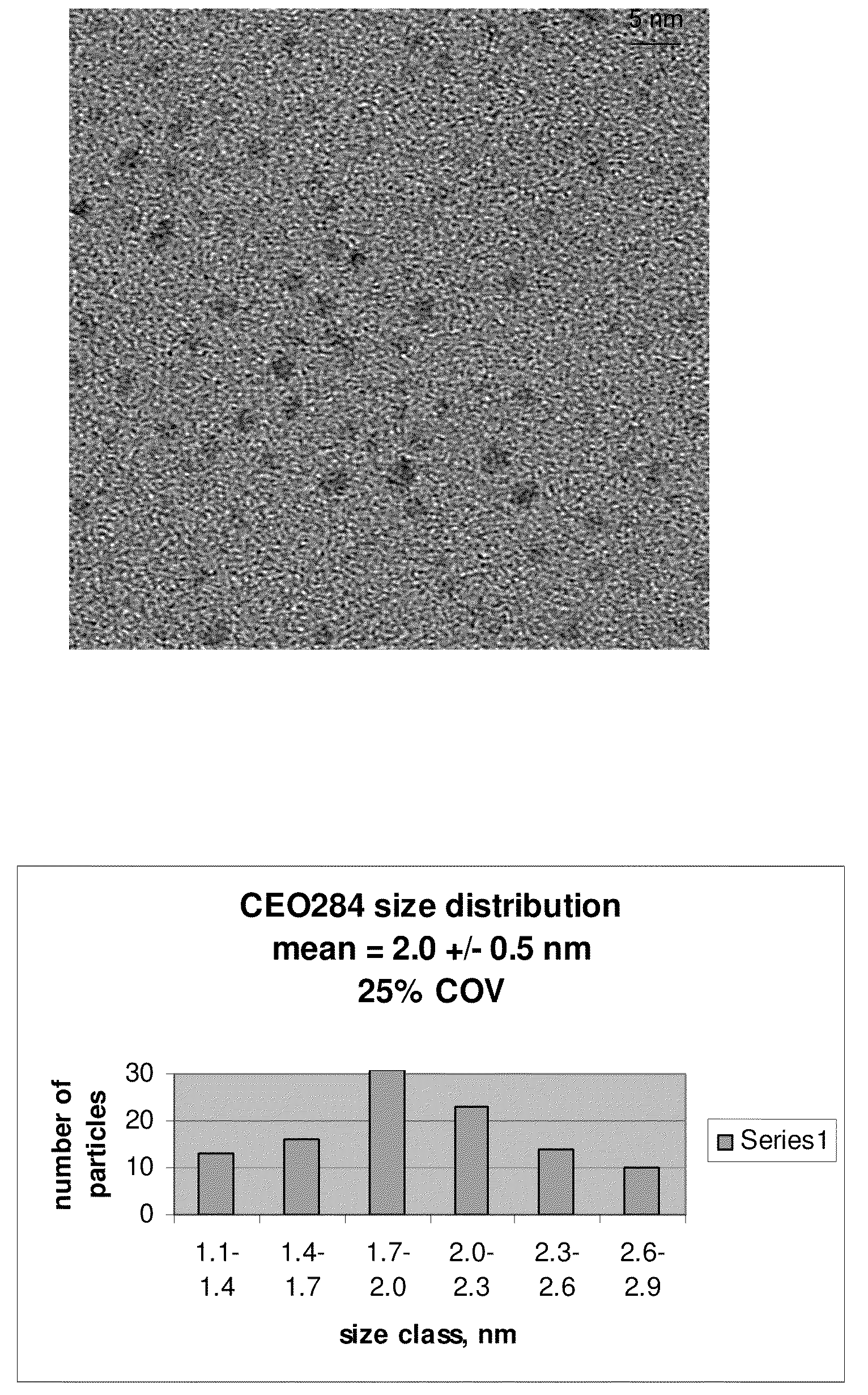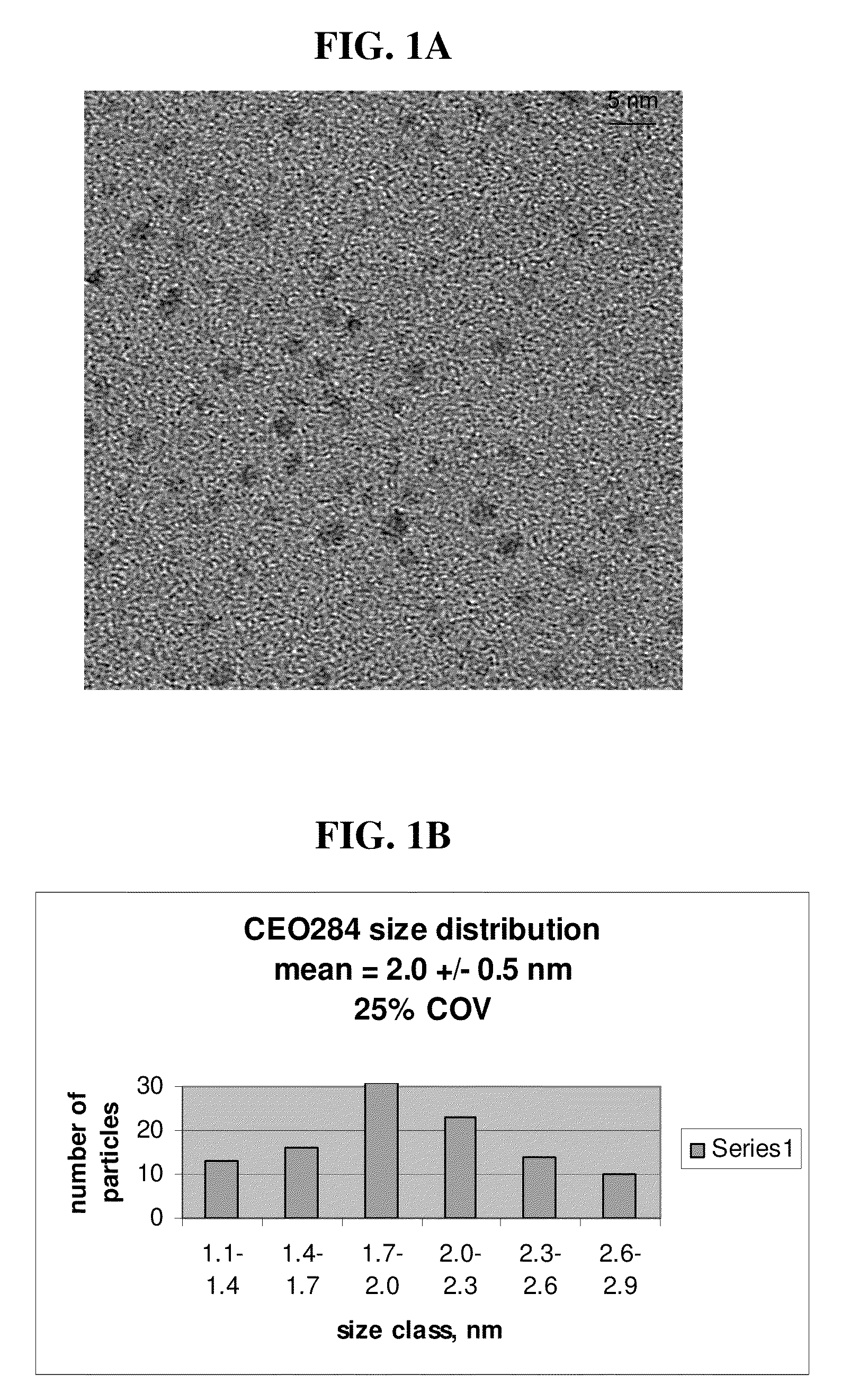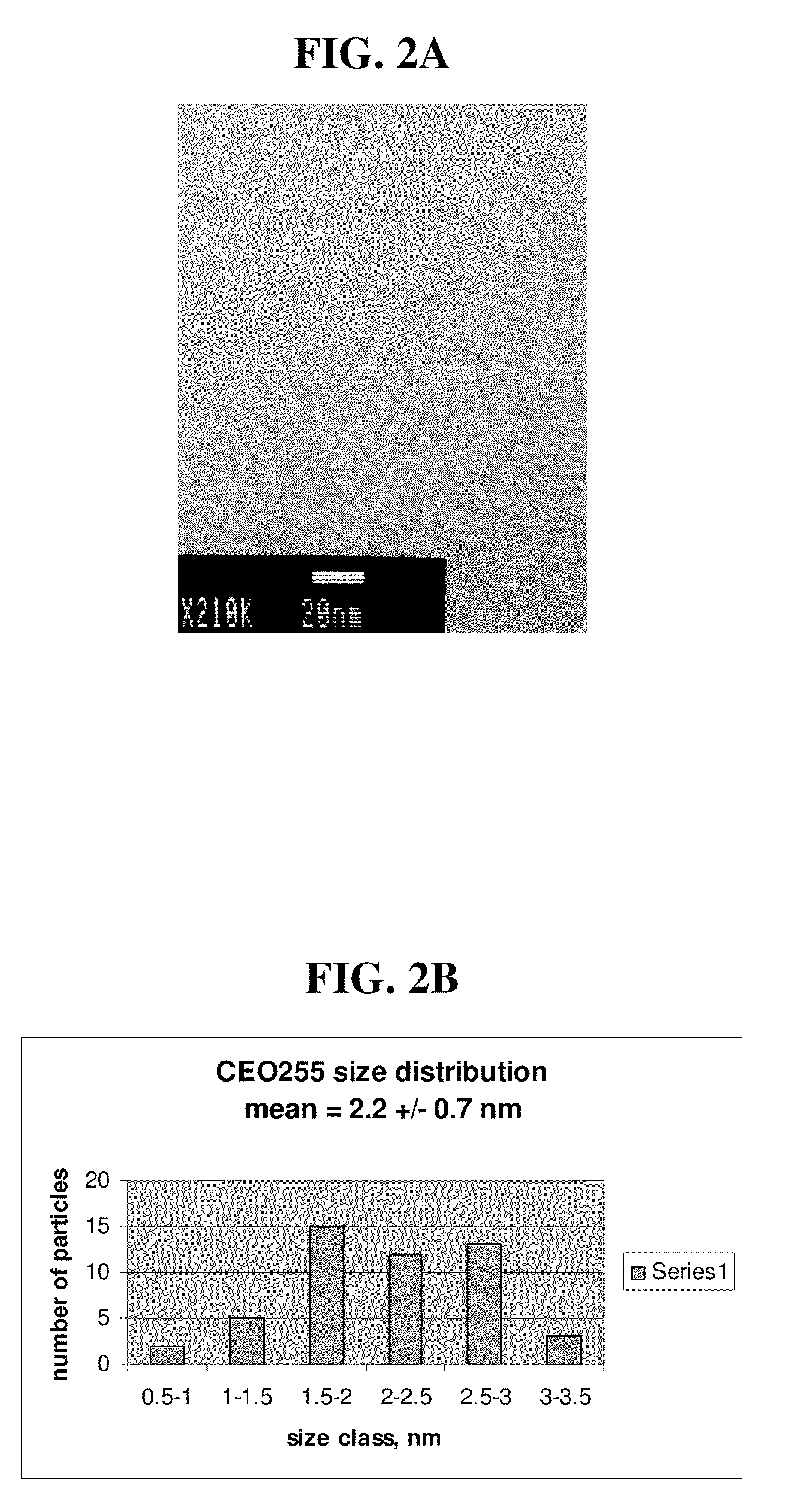Process for Solvent Shifting a Nanoparticle Dispersion
a nanoparticle and dispersion technology, applied in the field of nanoparticle dispersions, can solve the problems of affecting the stability of nanoparticles in non-polar environments, affecting the stability of nanoparticles, etc., and achieves stable homogeneous dispersion and efficient and economical processes.
- Summary
- Abstract
- Description
- Claims
- Application Information
AI Technical Summary
Benefits of technology
Problems solved by technology
Method used
Image
Examples
example 1
Solvent Shifting by Distillation (Comparative Process)
[0071]A series of mixtures (3:1, 1:1 and 1:3 by volume) of CeO-1 and diethylene glycol monomethyl ether (shift solvent) was prepared, which formed homogeneous dispersions. Removal of the water component from these diluted CeO2 dispersions to advance the solvent shift, was attempted by heating the mixtures under a simple distillation column at atmospheric pressure. Distillation of the 1:3 CeO2 / glycol ether mixture resulted in an initial distillate fraction at about 110° C., leading to concentration of the CeO2 containing residue. The water content of the residue was monitored periodically by analyzing samples of the residue using a calibrated Head Space Analyzer on a gas chromatograph mass spectrometer (GC-MS). It was observed, however, that when the CeO2 concentration reached about 0.42 grams CeO2 per gram of residue solution, a precipitate formed in the round bottom flask. This ceria containing precipitate could not be redispers...
example 2
Solvent Shifting by Rotary Evaporation (Comparative Process)
[0072]A set of homogeneous mixtures (3:1, 1:1 and 1:3 by volume) of CeO-1 and diethylene glycol monomethyl ether (shift solvent) was prepared as in Example 1 above. Removal of water to shift the solvent mixture to greater diethylene glycol monomethyl ether content (less polar), was attempted by rotary evaporation under reduced pressure supplied by a water aspirator and at bath temperatures of 45° C. and 65° C. Water content in the residue was again monitored by analyzing samples in a calibrated Head Space Analyzer on a GC-MS. Similar results to those described above for the distillation process were obtained, in that while concentration of the dispersion mixtures was possible, when the concentration approached about 0.4 grams CeO2 per gram solution, an irreversible precipitate of CeO2 formed, thus limiting the amount of water that could be removed by this process. Solvent shifting with ethylene glycol butyl ether was attemp...
example 3
Solvent Shifting by Dialysis (Inventive Process)
[0074]General Procedure for Solvent Shifting by Dialysis
[0075]A dialysis bag (SPECTRA / POR® Dialysis Membrane, MWCO: 2 kiloDaltons, NFW: 38 mm) was loaded with 15-150 mL of the 0.16 g / g CeO-1 dispersion prepared as described above, and 5-50 mL of a shift solvent such that the volume ratio of CeO2 aqueous dispersion to shift solvent was 3:1. The ends of the bag were folded over and secured (with rubber bands). The bag was placed into a vessel containing 60-600 mL of the shift solvent (external phase) such that the amount of shift solvent used was 3 times the total amount of the solution in the dialysis bag. The external phase shift solvent was stirred using a magnetic stirbar and a stir plate. The dialysis bag was equilibrated for 8 hours, after which the external phase shift solvent was replaced with fresh shift solvent, (once again 3 times the total amount of solution in the dialysis bag), and allowed to equilibrate for 20 more hours. ...
PUM
| Property | Measurement | Unit |
|---|---|---|
| geometric diameter | aaaaa | aaaaa |
| geometric diameter | aaaaa | aaaaa |
| diameter | aaaaa | aaaaa |
Abstract
Description
Claims
Application Information
 Login to View More
Login to View More - R&D
- Intellectual Property
- Life Sciences
- Materials
- Tech Scout
- Unparalleled Data Quality
- Higher Quality Content
- 60% Fewer Hallucinations
Browse by: Latest US Patents, China's latest patents, Technical Efficacy Thesaurus, Application Domain, Technology Topic, Popular Technical Reports.
© 2025 PatSnap. All rights reserved.Legal|Privacy policy|Modern Slavery Act Transparency Statement|Sitemap|About US| Contact US: help@patsnap.com



